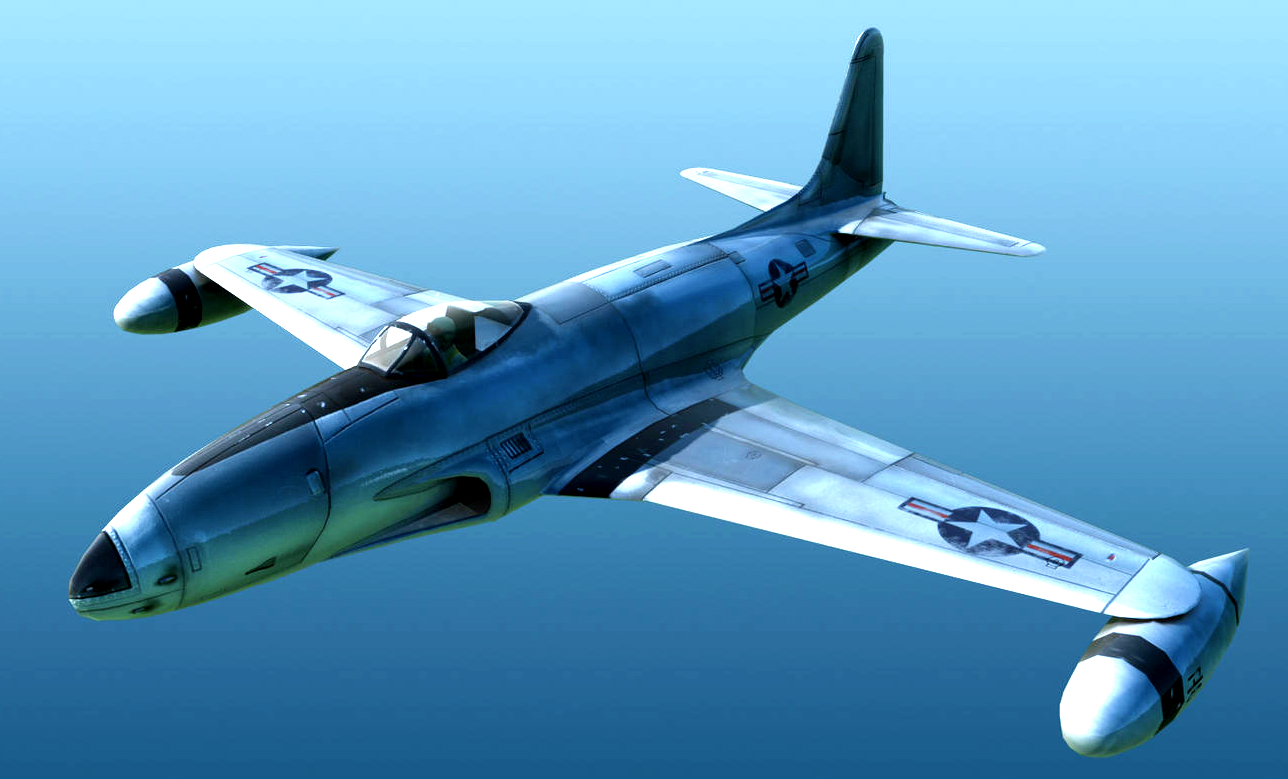
Lockheed P-80 or also known as the "Shooting Star" , was built and designed by Lockheed in 1943. This aircraft which was the first jet fighter used operationally by the United States Army Air Force (USAAF) is an aircraft designed with straight wings. Shooting Star was delivered in just 143 days from the start of the design process and the production models were flying by the end of World War II though it was not ready for service.
SPECIFICATIONS:
Armament: Guns: Six 0.50 in (12.7 mm) M2 Browning machine guns (300 rpg) | Rockets: Eight unguided rockets | Bombs: Two 1,000 lb (454 kg) bombs
Engines: One Allison J33-A-35 centrifugal compressor turbojet, 5,400 lbf (24.0 kN)
Maximum speed: 600 mph
Range: 1,200 miles
Service ceiling: 46,000 ft.
Span: 38 ft. 9 in.
Length: 34 ft. 5 in.
Height: 11 ft. 3 in.
Weight: 16,856 lbs. loaded
Crew: One
Complimented by the smooth lines and sleek appearance, the P-80 perhaps was the most elegant of the first generation jets. Beginning with the conical nose assembly and leads out to the simplistic-looking engine exhaust port had give a streamlined affair to the fuselage. The Shooting Star made use of an internalized system with easy maintenance access which was accomplished via a two-piece fuselage that could be separated near the engine while the other early jet-powered aircraft used to fit their engines on external nacelles under the wings.
 While the P-80 sports with only a single engine, two semi-elliptical intake openings were fitted to either side of the fuselage just ahead of the cockpit. This results in the production of the generally "wide" appearance of the aircraft when viewed from a high or underside angle. The intakes were organized in a fashion so as not to disrupt the air flow in the slightest and reached perfectly into the wing roots. Channels carved into the forward fuselage sides supported air into the intake ducts.
While the P-80 sports with only a single engine, two semi-elliptical intake openings were fitted to either side of the fuselage just ahead of the cockpit. This results in the production of the generally "wide" appearance of the aircraft when viewed from a high or underside angle. The intakes were organized in a fashion so as not to disrupt the air flow in the slightest and reached perfectly into the wing roots. Channels carved into the forward fuselage sides supported air into the intake ducts.
The laminar-flow wings that took on an elliptical shape all their own with both the leading and trailing edges narrowed into a curved wingtip to which the wingtip fuel tanks were allocated for improved range. The wings affords good forward and side vision since they were straight, low-mounted monoplane assemblies fitted just aft of the cockpit. The addition of a two-piece bubble canopy provided the pilot with unparalleled 360-degree views out of his cockpit. Only the light framing along the forward portion of the windscreen and the large-area wings to the pilot's side will obstruct the pilot's vision.

No comments:
Post a Comment